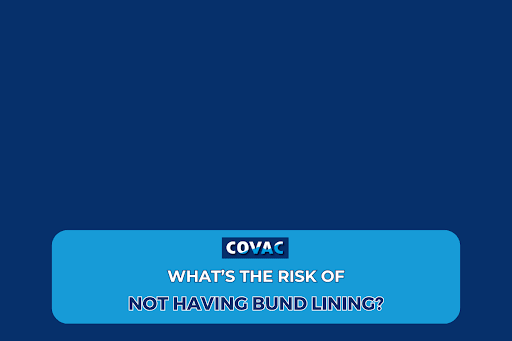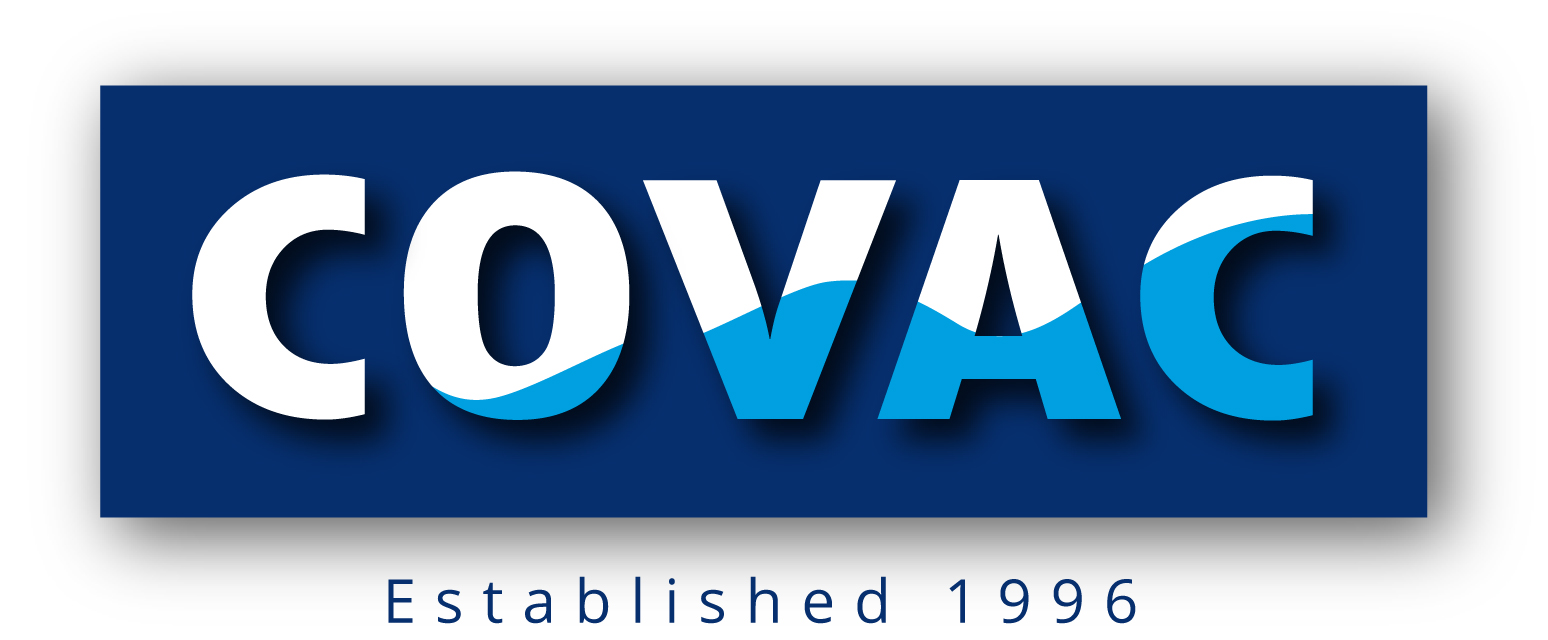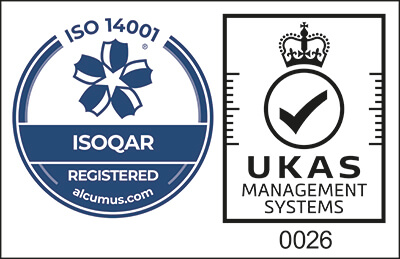
Bund lining plays a crucial role in ensuring the safety, compliance and longevity of storage facilities handling hazardous or non-hazardous liquids. Without proper bund tank lining, businesses expose themselves to serious risks, including environmental damage and financial penalties.
At COVAC, we have over 25 years of experience in bund lining, helping industries prevent costly failures and maintain compliance.
This article explores the key risks associated with neglecting bund lining and why investing in high-quality lining solutions is essential.
Why Is Bund Lining Important?
A bund is a containment structure designed to prevent leaks or spills from tanks or other storage units.
Bund tank lining enhances the durability of the containment system, ensuring it remains leakproof and resistant to chemical corrosion. Industries that store chemicals, fuel or hazardous waste rely on chemical bund lining to protect assets, prevent contamination and comply with strict regulations.
Without an effective bund lining system, the consequences can be severe, leading to operational downtime, legal issues and even severe environmental hazards.
Environmental Risks of Not Having Chemical Bund Lining
Soil and Water Contamination
One of the most significant dangers of an unlined bund is the risk of hazardous substances seeping into the soil and nearby water sources.
Chemicals from unlined bunds can infiltrate groundwater, affecting drinking water supplies and aquatic ecosystems. This type of contamination is difficult and costly to remediate, often resulting in long-term environmental damage.
Non-Compliance with Environmental Regulations
Environmental agencies impose strict regulations on chemical storage to prevent pollution.
According to the UK Environment Agency, businesses must ensure their bunding meets CIRIA 736 standards.
If a company fails to install bund tank lining, they risk breaching legal requirements, leading to severe penalties including fines and operational restrictions.
Compliance with bund lining standards is not just a recommendation, it is a legal obligation in many industries.
Harm to Wildlife and Natural Habitats
Toxic chemicals escaping from an unlined bund can devastate local wildlife and plant life.
Exposure to hazardous substances can lead to poisoning, genetic mutations and habitat destruction. By implementing chemical bund lining, businesses play a crucial role in safeguarding the environment and maintaining biodiversity.
Financial and Legal Consequences
Expensive Cleanup Costs
If a spill occurs due to a lack of bund lining, the cleanup process can be extremely costly. Depending on the severity of the contamination, businesses may need to invest in extensive remediation efforts, including soil decontamination and water treatment.
The cost of installing bund tank lining is minimal compared to the financial burden of an environmental disaster.
Regulatory Fines and Legal Action
Failure to comply with bunding regulations can result in hefty fines and legal proceedings. Companies may be held liable for damages, and repeated violations can lead to enforced closures.
Investing in chemical bund lining ensures that businesses meet industry standards and avoid legal consequences.
Loss of Insurance Coverage
Insurance providers often require companies to have adequate bunding in place. If a business neglects to install bund tank lining, insurers may refuse to cover environmental damages or operational losses caused by leaks.
This can leave businesses financially vulnerable in the event of an accident.
Structural Damage and Operational Disruptions
Corrosion and Structural Failure
Without proper chemical bund lining, bund walls and floors are exposed to corrosive substances, leading to deterioration over time. Cracks and erosion weaken the containment system, increasing the likelihood of leaks. A compromised bund structure can result in complete failure, leading to significant repair costs and operational downtime.
Increased Maintenance Costs
An unlined bund requires frequent maintenance and repairs to address leaks, cracks and structural weaknesses. Investing in bund tank lining significantly reduces maintenance requirements by providing a durable, chemical-resistant barrier that prolongs the lifespan of the containment system.
Disruptions to Business Operations
A leak or spill due to an unlined bund can lead to temporary shutdowns while cleanup and repairs are carried out.
This can disrupt production schedules, delay shipments and negatively impact a company’s reputation. Ensuring effective chemical bund lining minimises these risks and keeps operations running smoothly.
Safety Hazards to Employees and Communities
Health Risks to Workers and the Public
Exposure to hazardous chemicals poses serious health risks to employees and nearby communities. Inhaling toxic fumes or coming into contact with spills can lead to respiratory issues, skin conditions and long-term health complications. Installing bund tank lining helps contain dangerous substances, reducing the likelihood of workplace accidents and health hazards.
How to Prevent These Risks with High-Quality Bund Lining
The best way to mitigate these risks is to invest in professional chemical bund lining solutions. High-quality bund tank lining offers:
- Chemical Resistance: Protects against corrosive substances, ensuring bund integrity.
- Leak Prevention: Seals containment areas, preventing leaks and spills.
- Regulatory Compliance: Meets industry standards and legal requirements.
- Cost Savings: Reduces maintenance costs and prevents expensive spill cleanups.
- Extended Lifespan: Enhances the durability of bund structures, reducing the need for frequent repairs.
The risks of not having bund tank lining far outweigh the cost of installation. From environmental damage and regulatory fines to structural failures and safety hazards, an unlined bund poses significant threats to businesses, communities and ecosystems.
Implementing high-quality chemical bund lining ensures compliance, enhances safety and protects valuable assets.
For reliable bund tank lining solutions in the UK, contact COVAC today and safeguard your storage facilities against potential risks.










